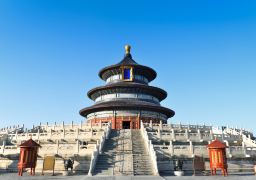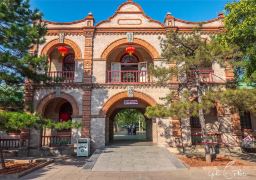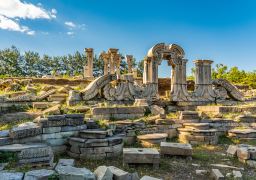Dà Jué Temple, a millennium-old Buddhist temple, was one of the eight great water gardens in the Western Hills during the Liao and Jin dynasties. Today, it is renowned for its clear springs, ancient trees, magnolia flowers, and elegant environment.
Constructed against the mountain, the temple faces west and east, preserving the Khitan tradition of the Liao dynasty, which revered the sun and faced east. The temple’s architecture is majestic and simple, with a strict and orderly layout. In addition to the regular structures, there are also the imperial villas from the Qing dynasty, including the ‘Sì Yí Táng’ (South Magnolia Court) named by Emperor Yongzheng and the ‘Qì Yún Xuān’ named by Emperor Qianlong, indicating its high status. On the north and south sides of the Mahavira Hall, there are twenty statues of heavenly beings, each with distinct personalities and vivid expressions. Despite enduring over five centuries of weathering, their superb craftsmanship and delicate painting still convey the solemnity of Buddhism and the grandeur of the royal family. The temple is home to many ancient and famous trees, including a 1000-year-old ginkgo tree, a 300-year-old magnolia, ancient sal trees, and pine cypresses. Particularly, the magnolia flowers, along with the lilac flowers of Fayuan Temple and the peony flowers of Chongxiao Temple, are known as the three major flower temples in Beijing. Every April, Dà Jué Temple hosts the Dà Jué Magnolia Cultural Festival, where visitors can admire the blooming magnolias and participate in various exhibitions and cultural activities. The temple is open all year round from 09:00 to 17:00, with specific operating conditions subject to daily opening status.Dà Jué Temple
Dà Jué Temple, a millennium-old Buddhist temple, was one of the eight great water gardens in the W[...]









